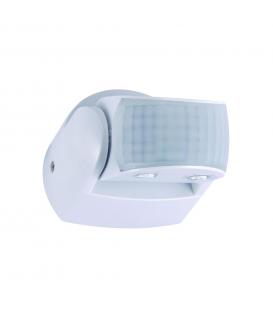Smart home lighting lamps efficient customizable systems

Building automation and smart home lighting are integral components of the broader concept of smart homes and intelligent building management systems. Smart lighting, a subset of building automation, utilizes advanced technologies to provide efficient, flexible, and user-friendly control over lighting systems in residential and commercial spaces. This comprehensive overview delves into the details, benefits, and applications of building automation with a focus on smart home lighting.
Components of Smart Home Lighting:
- Light Fixtures: Smart lighting systems incorporate LED or other energy-efficient light sources. These fixtures often feature controllable brightness levels and color temperatures.
- Smart Bulbs: These replace traditional bulbs and allow remote control, dimming, color-changing capabilities, and integration with other smart devices.
- Switches and Dimmers: Smart switches replace conventional wall switches and enable remote control, scene programming, and voice activation.
- Controllers: Centralized or decentralized controllers manage the entire lighting system. They process user inputs, sensor data, and scheduling to automate lighting behavior.
- Sensors: Motion sensors, light sensors, and occupancy sensors detect movement and ambient light levels, enabling the system to respond intelligently to the environment.
- Communication Protocols: Smart home lighting systems use wireless communication protocols like Zigbee, Z-Wave, Bluetooth, or Wi-Fi to connect devices and enable seamless control.
Benefits of Smart Home Lighting:
- Energy Efficiency: Smart lighting systems optimize energy usage by adjusting brightness levels, color temperatures, and turning off lights when not needed. This leads to reduced energy consumption and lower utility bills.
- Customization: Users can personalize lighting scenes for different activities or moods, such as "Relaxation," "Movie Night," or "Productivity," creating a tailored ambiance.
- Convenience: Remote control through mobile apps or voice assistants allows users to adjust lighting from anywhere, eliminating the need to manually operate switches.
- Enhanced Aesthetics: Color-changing smart bulbs can transform the look and feel of a space instantly, offering a wide spectrum of colors to match décor and preferences.
- Safety and Security: Automated lighting can simulate occupancy when residents are away by turning lights on and off, deterring potential intruders.
- Health and Well-being: Smart lighting can mimic natural daylight patterns, supporting circadian rhythms and promoting better sleep and alertness.
- Longevity: LED-based smart bulbs have longer lifespans compared to traditional incandescent bulbs, reducing maintenance and replacement costs.
Areas of Applications for Smart Home Lighting:
- Ambiance Control: Adjusting lighting levels and color temperatures to create the desired atmosphere for relaxation, entertainment, or social gatherings.
- Task Lighting: Enhancing productivity and comfort by providing optimal lighting for specific tasks such as reading, cooking, or working.
- Energy Savings: Automating lighting based on occupancy and natural light availability to reduce energy consumption.
- Security: Using smart lighting to simulate presence, enhancing home security by deterring potential intruders.
- Sleep Enhancement: Employing circadian lighting that adjusts throughout the day to promote healthier sleep patterns.
- Entertainment: Synchronizing lighting with audiovisual systems for immersive movie or gaming experiences.
- Aesthetics: Creating dynamic lighting displays that highlight architectural features, artwork, or decorative elements.
- Integration: Integrating smart lighting with other smart devices, such as thermostats and security cameras, to create a cohesive smart home ecosystem.
Conclusion: Smart home lighting is a fundamental aspect of building automation, offering numerous benefits and applications for residential and commercial spaces. By leveraging advanced technologies and user-friendly controls, smart lighting systems enhance energy efficiency, customization, convenience, aesthetics, and security. As the world moves toward more intelligent and connected living environments, smart home lighting continues to play a crucial role in shaping the way we interact with our surroundings.
Browse our "Smart home lighting" collection
Smart Home Lighting Lamps: Efficient & Customizable Lighting Systems
- 24,18 €SMART+ indoor lighting - Individual and flexible lighting for your home. Efficient Led lamp for fans of warm white...
- 32,83 €The classic Led lamp as 60 watt replacement with real tunable white light. Color temperature from warm white to cool...
- 73,61 €Millions of RGB colors, from warm white to daylight white. Adjustable Led lamp for RGB color mode (more than 16...









